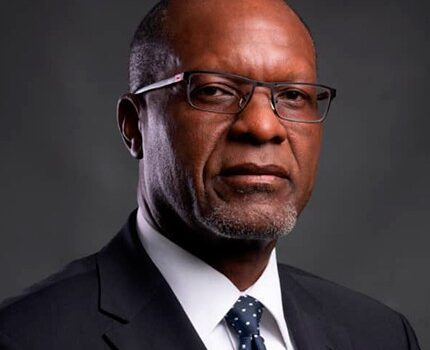
By: Josef Kefas Sheehama
The annual inflation rate recorded for July 2023 was 4.50%, a steep decrease compared to 5.30% recorded in June 2023.
Keeping the repo rate steady is particularly motivating for aspiring, first-time home buyers, whose appetite for home ownership remains consistent.
The Bank of Namibia (BoN) has left its key interest rate unchanged. The monetary policy committee (MPC), voted unanimously to keep the benchmark repurchase, or repo rate unchanged at 7.75%.
With no change in the policy rates there will be no immediate impact on the consumer’s monthly commitments such as home loan, car loan and personal loan as other lending and interest rates are linked to the repo rate. An unchanged repo rate will mean that the interest on your house and vehicle payments or savings and investment products may remain the same too.
However, the interest earned from your interest-bearing savings products may also be less. With the repo rate remaining unchanged, consumers are now faced with the difficult decision of whether to opt for fixed-rate loans that may be available or stick to floating-rate loans.
While fixed-rate loans offer an assurance of a constant repayment amount, they come with a higher initial cost. On the other hand, floating-rate loans offer more flexibility. Furthermore, the BoN has been doing the balancing act between economic growth and inflation, as Covid-19 and the Russia – Ukraine war have adversely impacted economic growth.
However, there are many indicators which hint that inflation may become a concern soon. Hence, the MPC noted that inflation is likely to moderate in the first half of 2023 and move closer to the target rate, thereafter, providing room to remain accommodative.
Timely and opposite supply side measures from the government have substantially helped contain inflationary pressures. Uncertainties, however, remain on domestic food price outlook due to sudden weather events and imminent drought in Namibia.
Moreover, the pause in the repo rate hike taken by BoN, if at all it provides a breather, should not be seen as a flattening of the rate hike cycle as BoN remains focused on the movement of macroeconomic variables.
The primary focus of BoN is to shift to its core mandate, which is to manage inflation and ensure that it remains within the range of the target inflation. A higher domestic inflation compels BoN to increase the policy rates.
The effect of inflation and interest rates on economic growth is a serious problem. Progress to reducing inequality has been slow and, as a result, Namibia remains one of the most unequal countries in the world.
Namibia’s past economic growth has not been enough to deal with the country’s triple challenge of high poverty, inequality, and unemployment.
The weakening of growth in the last few years combined with the Covid-19 shock further put at risk social development progress. There is still a need for the government to create a conducive social and political environment to attract foreign investors into various sectors of the Namibian economy.
That the Namibian economy is growing very slowly can be traced back to the inflation versus interest rate conundrum. Tightening monetary policy raises the costs of borrowing for consumers and businesses, weakening demand and curbing prices.
But it could also pinch people’s budgets as BoN continues to normalise policy over the rest of 2023. Money will become more expensive. The BoN is realising that by having so much cheap money available, it is really causing a lot of consumers to spend. Over-expansion of the money supply can also create demand-pull inflation.
Note that the money supply is not just cash, but also credit, loans, and mortgages. When the money supply expands, it lowers the value of the dollar. When the dollar declines relative to the value of foreign currencies, the prices of imports rise.
Interest rates returning to more normal levels is not necessarily a bad thing. It generally is a recognition of better economic growth and better economic conditions. But whenever there is change, there is some anxiety that comes with it.
The biggest dangers this year will stem from inflation and the risk that policymakers will call the post-Covid-19 recovery wrong. This is the year we will find out whether the global economy is robust enough to get by with less help from governments and central banks. And whether inflation is a temporary byproduct of Covid-19 or a more persistent problem.
Since it takes so long to move on, it may need a kick and markets are now betting on BoN to reduce the repo rate at least in the remaining meetings. Inflation is a sustained increase in the general price level of goods and services in an economy over a period.
Since interest rates determine the price of money, it is logical to assume that if the price of money increases, then the prices of goods will also increase.
Suppressing the higher inflation would require deliberate corrective action. I believe BoN had managed the economy well during Covid-19, effectively using the tools available to it to achieve its goals of maintaining the stability of the currency, ensuring full employment, and furthering the economic prosperity and welfare of the people of Namibia.
The BoN decided to pause the repo rate, however, this does not mean that the interest cannot increase in the near future. BoN deemed the current monetary policy stance consistent with keeping inflation within its target range for the remainder of 2023; moving closer to the midpoint of BoN’s target range, partly due to a positive base effect, moderate in commodity prices and anchored inflation expectations.
Meanwhile, BoN expects the economy to expand 3.3% this year, underpinned by upbeat household spending and investment activity, as well as a supportive trade sector. In 2024, we expect the growth rate to decline to 3% respectively.
Therefore, I doubt BoN will resort to additional tightening. The Namibia economy recorded a growth of 5% in the first quarter. Inflation quickly moderated after global commodity prices normalised.









Comments